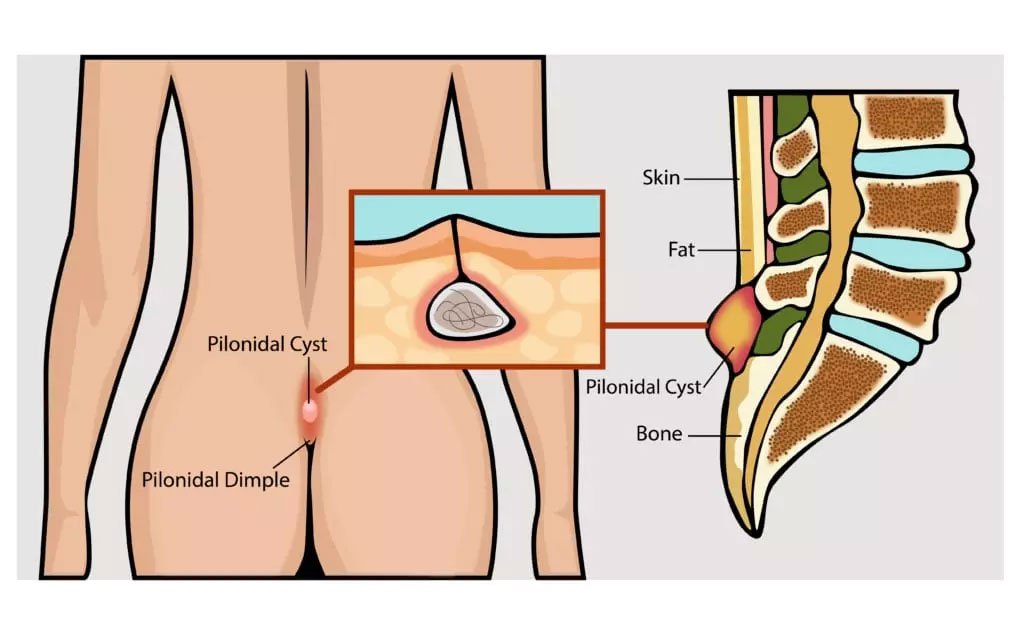
PILONIDAL SINUS
Pilonidal sinus, also known as Pilonidal disease, is a condition where a small hole or tunnel develops in the skin at the top of the buttocks, near the tailbone. The sinus is formed when hair, dirt, and other debris become trapped in the area and cause an infection. The infection can lead to the formation of a cyst or abscess, which can be painful and tender to the touch.
Causes
- Pilonidal sinus most commonly affects young men
- Prolonged sitting
- Excess hair growth
- Poor hygiene
- Family History
Symptoms
The symptoms of pilonidal sinus can vary in severity and can include:
- A small dimple or depression in the skin at the top of the buttocks, near the tailbone
- Pain and tenderness in the area, particularly when sitting or moving
- Swelling and redness around the sinus opening
- Drainage of pus or blood from the sinus opening
- Foul-smelling discharge from the sinus
- Hair protruding from the sinus opening
- Itching or discomfort in the area
- Normally fever is not there
Diagnosis
Physical examination of the affected area.
In some cases, they may also perform the following tests:
- Imaging tests: A CT scan or MRI may be ordered to help determine the extent of the sinus and any underlying structures that may be affected.
- Sinography: This test involves injecting a contrast dye into the sinus and taking X-rays to help identify the extent of the sinus and any other abnormalities.
- Culture and sensitivity testing: A sample of the drainage from the sinus may be taken and sent to
Treatment
The treatment of pilonidal sinus typically depends on the severity of the condition. Mild cases may be treated with antibiotics and dressings. while some cases may require surgical intervention. Some of the treatment options include:
- Incision and drainage
- Excision
- Laser surgery
- Flap surgery
Benefits of Laser Surgery for Pilonidal Sinus:
- Minimally Invasive: Laser surgery involves small incisions, significantly reducing tissue trauma and post-operative discomfort.
- Precise Removal: Laser energy can precisely target and remove sinus tracts and infected tissue while minimizing damage to healthy tissue.
- Reduced Risk of Recurrence: Laser surgery promotes better healing, which can lead to a lower risk of recurrence compared to conventional methods.
- Faster Recovery: Patients often experience quicker recovery times, allowing them to return to their normal activities sooner.
- Minimal Scarring: The smaller incisions used in laser surgery can result in minimal scarring, contributing to better cosmetic outcomes.
Prevention
- Maintain Good Hygiene
- Avoid Prolonged Sitting
- Maintain Healthy Body Weight
- Avoid Tight Clothing
Have Questions? Get in touch!
Adjoining More Supermarket,
Jalandhar 144022

